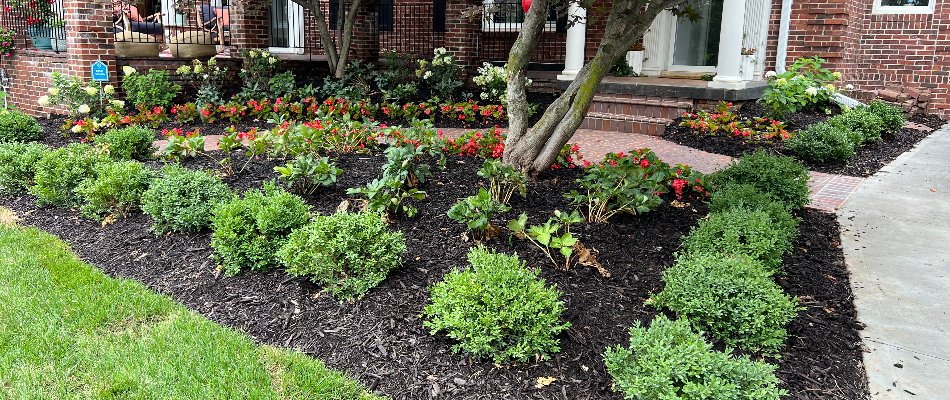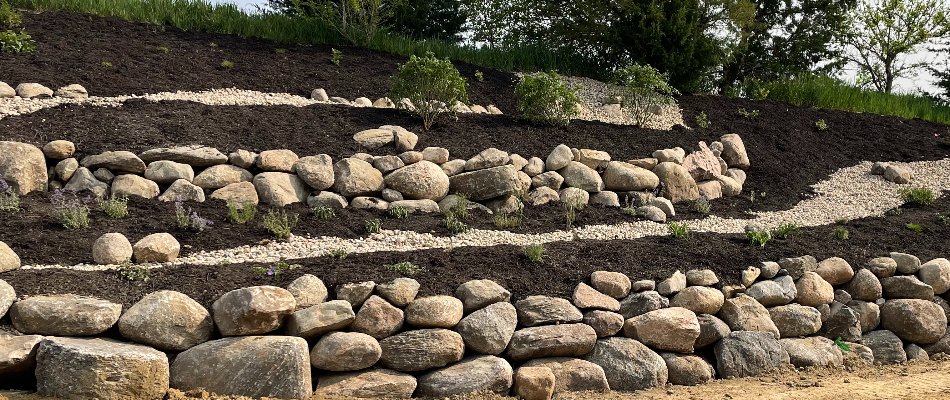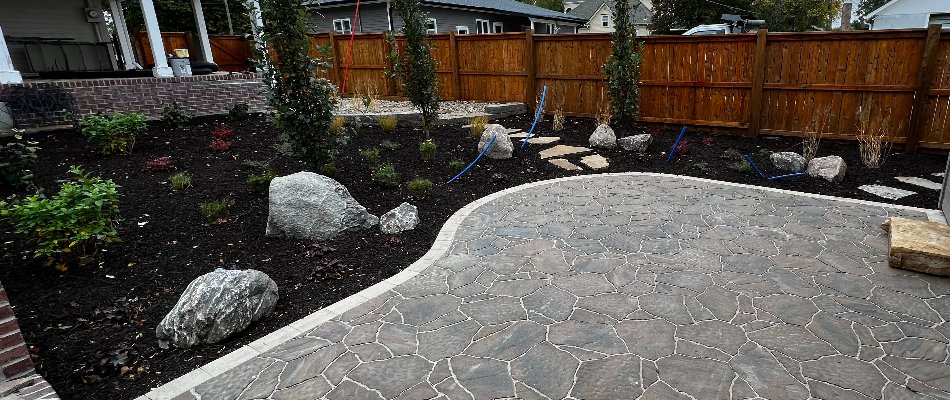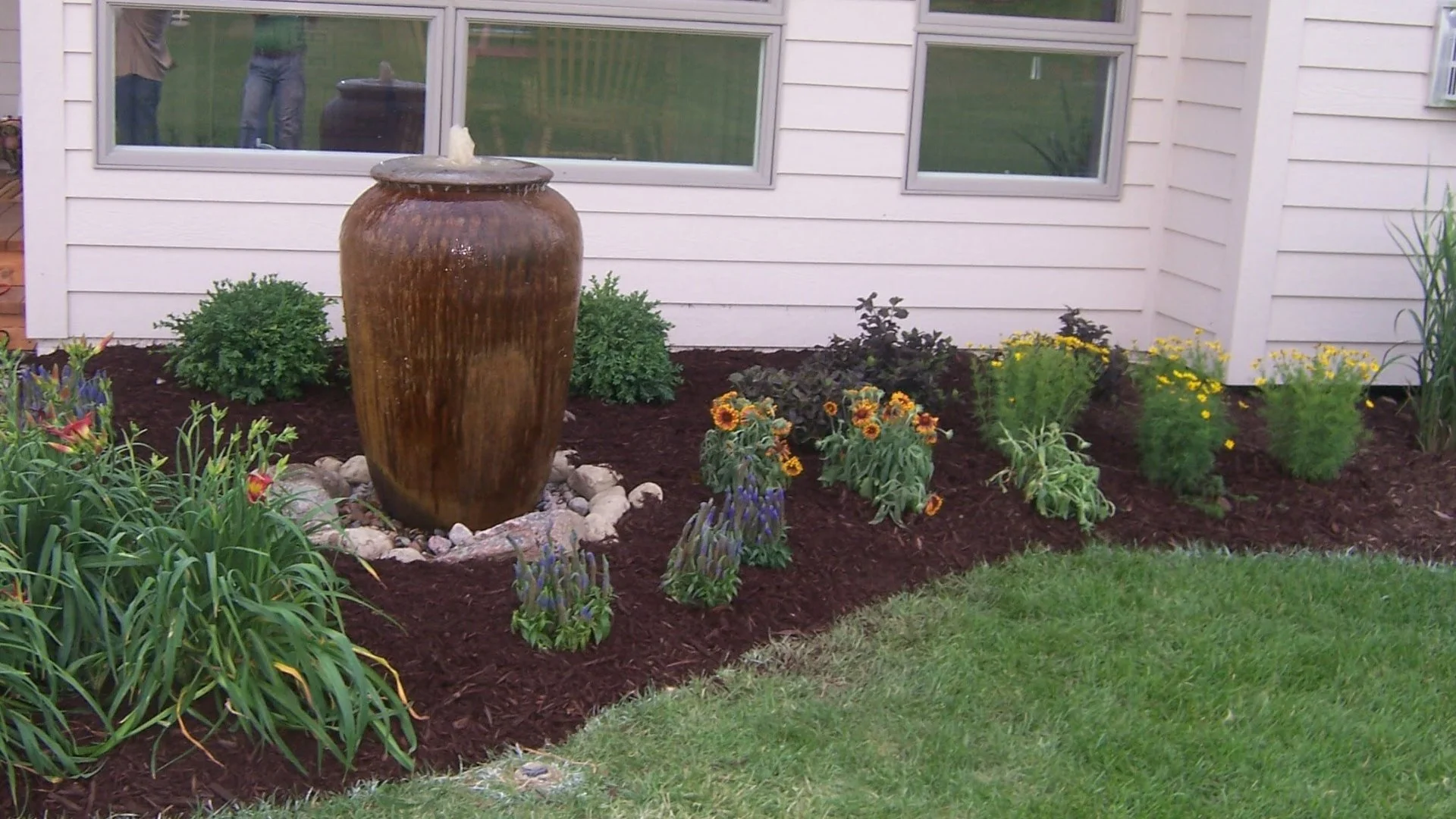Mulching can enhance your landscape in Nebraska or Iowa, but DIY efforts often lead to common mistakes. Installing mulch by hand offers precision, avoiding uneven coverage that mechanical methods can cause. Achieving the right mulch thickness is crucial; too much suffocates roots, while too little fails to benefit the garden. Ideally, a 2-3 inch layer is best. Additionally, removing weeds before laying mulch is essential to prevent competition for nutrients. These steps ensure mulch effectiveness and plant health.
Not installing mulch by hand is a common mistake.

One of the first mistakes that you could make if you install mulch yourself is not installing mulch by hand and instead opting for mechanical methods, like using a mulch blower. While mulch blowers can cover large areas quickly, they often sacrifice precision for speed. This can lead to uneven coverage, with some areas receiving too much mulch while others receive too little.
Installing mulch by hand allows for meticulous placement, ensuring an even layer that adheres closely to your landscape's contours. It lets you target specific areas that may need more mulch and ensure sensitive plants aren't overwhelmed. Hand installation also gives you the opportunity to identify and address any issues with your soil or plants beforehand, enhancing the overall effectiveness of the mulch.
Installing a layer of mulch that is too thick or not thick enough is a common mistake.

Another mistake of DIY mulch installation is miscalculating how much mulch your landscape needs. Finding the right thickness for your mulch layer is crucial. Too much mulch can suffocate plant roots, while too little mulch may not provide adequate benefits.
A layer that's too thick creates what is sometimes referred to as "mulch volcanoes" around the base of trees and shrubs. This can lead to excessive moisture, causing root rot and creating a habitat for insects and diseases. Thick layers can also prevent water and air from reaching the roots, leading to unhealthy plant growth. On the other hand, insufficient mulch won't effectively suppress weeds or retain the moisture necessary for healthy plant growth. It might not provide adequate insulation against temperature fluctuations either.
Not removing weeds before installing mulch is another mistake you could make.

Another common error is neglecting to remove weeds before the mulch installation. Mulch serves as an excellent weed suppressant, but only when applied over a weed-free base. If weeds aren't removed beforehand, they can continue to grow under the mulch, eventually breaking through the surface.
These persistent weeds can compete with your plants for nutrients and water, undermining your garden's overall health and appearance. Removing weeds before applying mulch ensures that your garden gets the full benefits, and your plants have less competition for resources. It may take some extra time initially, but it’s a worthwhile investment for a healthier and more aesthetically pleasing landscape.
Give us a call today to sign up for our mulch installation service!
Installing mulch yourself can lead to many mistakes that can cause more harm to your landscape than good. To avoid these mistakes, let our professionals at Clear Creek Landscapes help. We provide a mulch installation service for commercial and residential properties, as well as HOAs, in Omaha, Elkhorn, Gretna, NE, and nearby areas, including neighborhoods in Iowa.
Our mulch installation service provides top-notch options, like dark-dyed and dark chocolate mulch! You can schedule this service in the spring, between March and April, to help set up your landscape for success for the entire growing season. We'll make sure the right amount of mulch is installed on your landscape beds to ensure you get the best results! Call us today at (402) 677-7652 to sign up!



Comments (0)
Thanks for your comment!
Thanks for your feedback! Your comments have been successfully submitted! Please note, all comments require admin approval prior to display.
Error submitting comment!
There is a problem with your comment, please see below and try again.